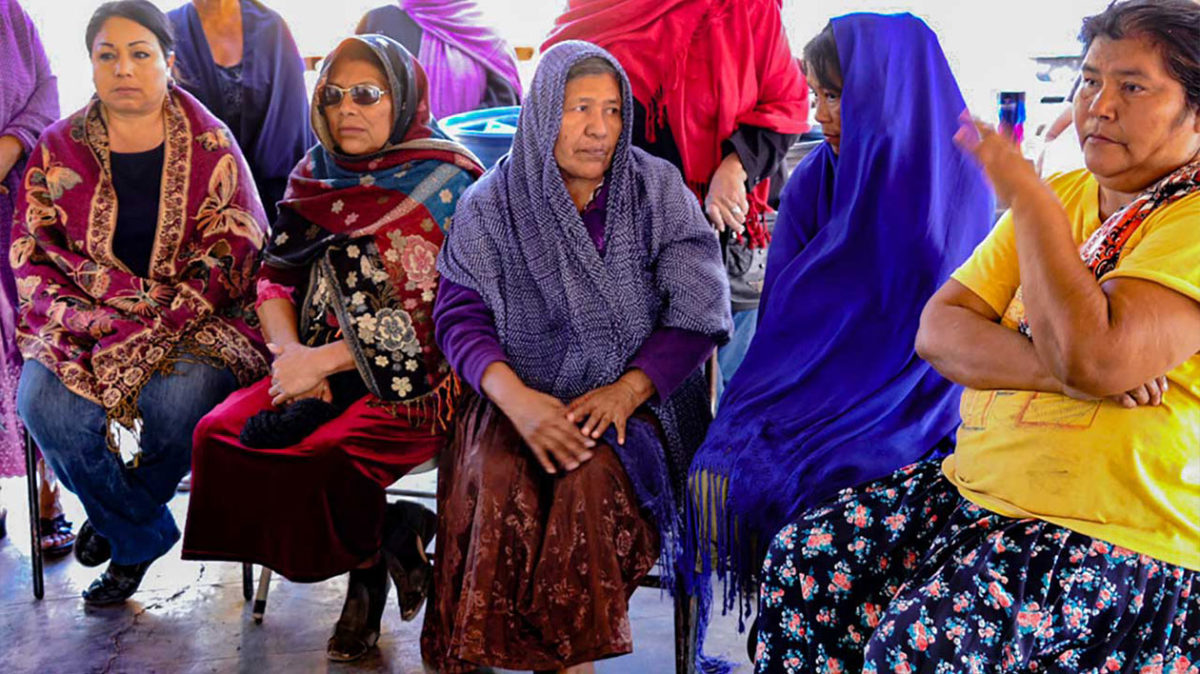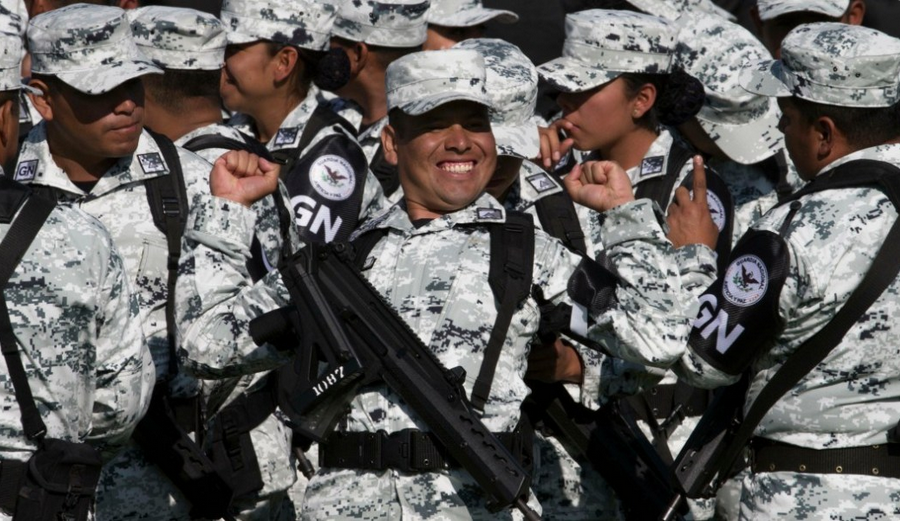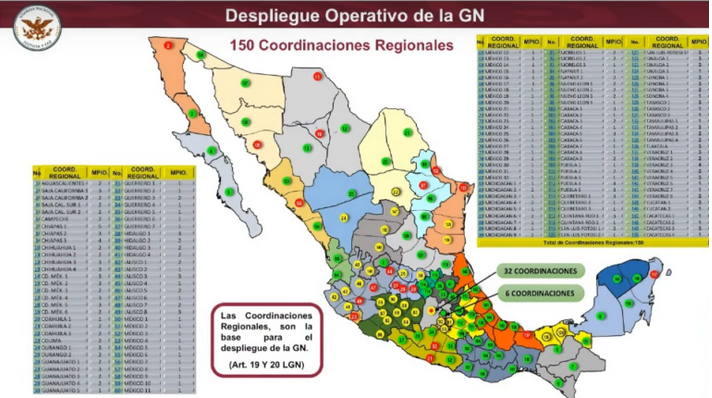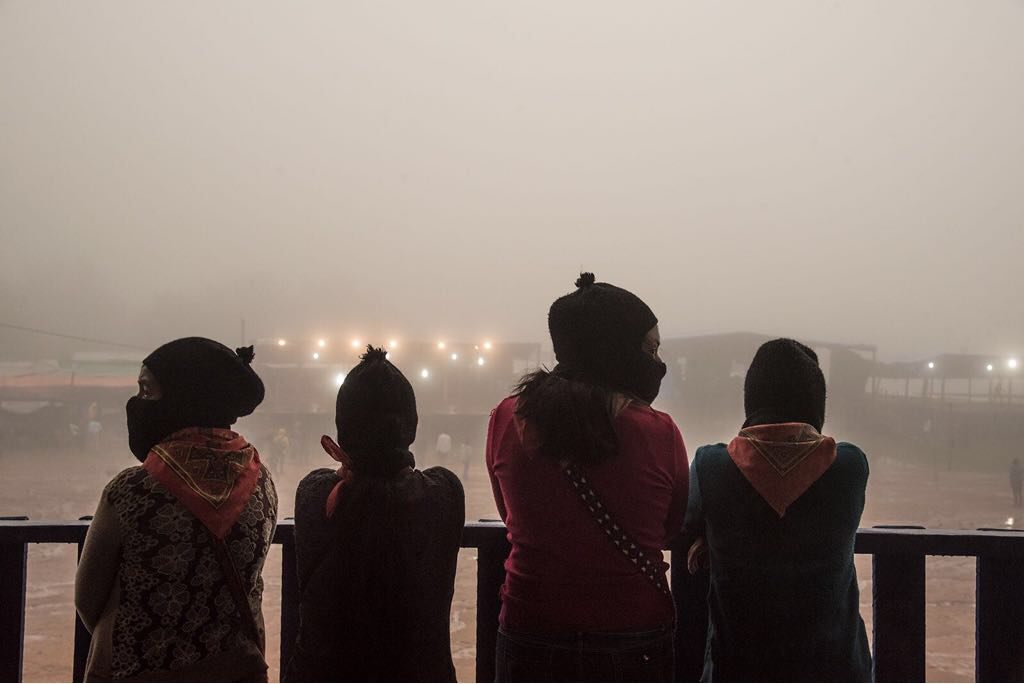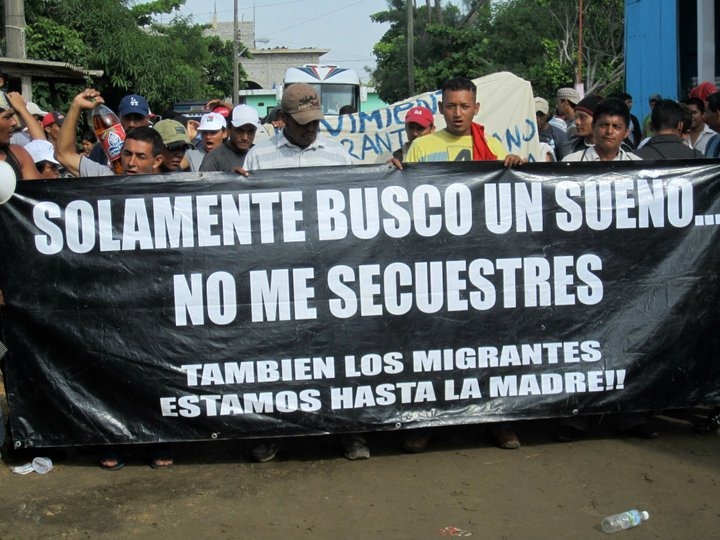This report was written by Santiago Navarro F. for Avispa Midia with support from the Investigative Reporting Initiative in the Americas, an International Center for Journalists (ICFJ) program, in partnership with CONNECTAS.
Spanish Version: published on September 5, 2019 ⇒ Los “Ventajosos” beneficios de Sempra Energy en México
In 1995, the structural reform of the Mexican natural gas sector opened the door for Sempra Energy to become one of the first private companies to invest in gas transportation in Mexico. Two decades later, Sempra, based in San Diego, CA, has positioned itself as the second most important company in the industry. Its main springboard was a second energy reform, implemented in 2013, which has allowed its subsidiary IEnova to make over 8.7 billion dollars.
Five years after this reform—one of ex-President Enrique Peña Nieto´s signature programs—IEnova’s assets have grown to such an extent that by the end of 2018 it owned 17 gas pipelines, six storage terminals, five solar energy complexes, three wind power complexes, and a thermoelectric plant. It owns six of the 16 interconnection points for gas exports from the US into Mexico.
Although several of the Sempra gas pipelines were disrupted by social movements, the company has not lost a single peso. It has charged for services it never provided through the legal chicanery of “force majeure” and “fortuitous case” clauses in its contracts, which have resulted in a multi-million dollar debt for the Mexican government.
At the beginning of 2019 the current president of Mexico, Andrés Manuel López Obrador, described these agreements made with prior governments as “unconscionable” and requested their voluntary renegotiation.
♦ ♦ ♦
The thermometer can climb up to 95° F on a spring day in the Sonoran Desert, northern Mexico. This is the homeland of the Yaqui people, made up of eight different indigenous groups. In 2012, IEnova entered into a contract with the Federal Electricity Commission (CFE) for the construction and operation of the Gasoducto Sonora transport system, which crosses Yaqui territory.
IEnova’s 2018 financial report states that this project, one of the 17 gas pipelines in the company’s portfolio, has been completed and in operation for two years. However, we discovered that, roughly 300 meters from the community of Loma de Bacum, this pipeline remains unfinished and has never provided any kind of service.
Loreta Vázquez Molina, a Yaqui tribe member, guides us through the desert vegetation until we reach an excavation site where we see that a fraction of the pipeline is exposed to the elements. Its two unconnected sides, which have begun to rust, are only separated by a few meters. On either side of the trench where the pipe lies, one can see yellow, metal gas pipeline signs, some already demolished and others pierced by bullets, signs of the conflict the gas pipeline has brought to this community.
Construction began in 2013, and it was supposed to enter into service in 2014. The company failed to inform the towns of the Yaqui Tribe, as stipulated in government regulations, and the town of Loma de Bacúm resisted. Local leaders headed to the Sonoran courts, which ruled in their favor and suspended pipeline construction in June 2017.
Although construction was halted by the legal system, IEnova told its investors that the suspension had been for acts of “sabotage.” IEnova’s contract with CFE stipulates that “sabotage, as with natural phenomena, commercial embargoes, and civil disturbances”, among other reasons, will be considered “fortuitous or force majeure events”. This means that the CFE is required to pay for the use of non-functioning pipelines. These clauses were the ones that guaranteed ongoing payments to IEnova until the beginning of 2019, disbursements that led the state into millions of dollars of debt. Avispa Midia asked the CFE how much IEnova and other companies were paid for these non-operational pipelines, but the agency responded that this information was confidential.
IEnova is not the only company that has benefitted from this: 17 pipelines throughout Mexico have received payment due to “force majeure”, as reported by Unidad de Transparencia de la Auditoría Superior de la Federación (Transparency Unit of the Superior Audit of the Federation). Five of them belong to Sempra Energy. Some have been completed but do not receive the gas they're supposed to transport because other pipelines remain unfinished. These have cost the CFE 16 billion dollars, according to the CFE’s 2018 financial report. These payments were legally valid, though dubious, because they are stipulated in contracts approved by the Energy Regulatory Commission (CRE).
Sempra’s subsidiaries have been the greatest beneficiaries of these loopholes, since the five of their pipelines that have received these payments are all high capacity and strategic. Faced with a growing debt, the CFE went to international courts in London and Paris to demand the review and renegotiation of contracts for seven pipelines, including two involving IEnova: the Sonora Gas Pipeline (Guaymas-El Oro fraction) and the Gasoducto Sur de Texas-Tuxpan, where it has investments with TC Energy (formerly TransCanada).
Toeing the political line laid down by President López Obrador, the state, through these legal remedies filed in international courts, claimed that the clauses were invalid since they go against public policy and the greater social good.
However, on August 27, 2019, the Mexican president declared that his government had reached an agreement with three companies that owned four unfinished gas pipelines, including Carso, TC Energy and IEnova. These new agreements extend the lease terms and establish a fixed payment for the rent of private pipelines.
Carlos Salazar Lomelín, president of the Business Coordinating Council (CCE), said that these agreements were established on the condition that companies would return the amounts paid for “force majeure” to the state. This would be "in exchange for a longer contract term or for another set of conditions", the president of the CCE communicated at a press conference.
Under these new agreements, the return of the amounts paid for “force majeure” will only concern these four contracts, which include two of the five pipelines in which IEnova has investments. For the remainder of the gas pipelines, no further information is available.
Concerning the communities that have risen up and prevented the completion of the pipelines’ construction, specifically Loma de Bacúm, the president of Mexico said that the Ministry of the Interior (Secretaría de Gobernación) is working to resolve these conflicts and ready the pipelines, but also said that any further “stoppage of these projects would mainly affect the country and not the companies themselves”.
López Obrador continued: “If pipeline construction stops, it’s the Mexican people who lose, because it is the CFE, not the company [who is investing]”. But the contracts go much further: even though the CFE has invested large sums in the construction of these pipelines, the contracts stipulate that they become the property of private companies. They also require this parastate agency to pay for 100% of the gas transportation capacity, even if only a portion of this capacity is used.
The contracts that the CFE has signed were mainly for the transport of gas en route to various points of energy generation in Mexico, but this transport capacity is not exclusive to the parastate agency, since these companies also use the pipelines to transport the gas they sell to industrial and urban sectors.
At the beginning of 2019 López Obrador argued that the CFE was a successful company which supplied 100% of the national demand until before the 2013 reforms, but today, only 50% of the demand is met nationally. "What happened? Business deals were made with state protections; unconscionable and abusive contracts have been awarded to favored individuals”, the president proclaimed on February 11, 2019 at his morning press conference.
Today it seems that the problem is being resolved, but issues remain with the Guaymas-El oro project, a piece of the Sonora Gas Pipeline that has encountered strong social resistance. One of the main parties involved in the Sonora Gas Pipeline contract is the current president of IEnova, Tania Ortiz López Negrete, who is also the legal representative of the Aguaprieta company, another of Sempra Energy's subsidiaries.
Tania Ortiz Mena, CEO of IEova
Tania Ortiz Mena López Negrete was the foothold that Sempra Energy maintained within the Energy Regulatory Commission (CRE) during the Energy Reform period. While she was part of this public body as an advisor (2015-2018), she was simultaneously an executive at IEnova (2014-2018).
The CRE deals with oil, natural gas, petroleum, petrochemical, and biofuel issues. It regulates natural gas, both in its price and in terms of new facilities, operation, maintenance, and private security across all activities except production. It collaborates with other administrative bodies to produce contract models and bidding rules.
Tania Ortíz, who has had a wide-ranging energy career in both the public and private sectors and comes from an important family linked to Mexican politics, opened the door for Sempra’s advance in Mexico via its subsidiaries. She took her position in the company after IEnova suffered a million dollar loss due to the fall in the prices of electricity and natural gas (from USD $4.55 in 2014 to USD $2.88 in 2015). She immediately began lobbying for a price adjustment, which helped almost double IEnova's revenues, from $613.41 million in 2015 to $1.368 billion in 2018.
The CRE’s rules of operation are clear in stipulating that members should “avoid making use of their roles as advisors for benefit of themselves or external agents.” But Tania Ortíz promoted annual gas price adjustments that benefited Sempra Energy's gas pipelines in Mexico at the same time that she was part of the Council that oversaw the exercise of these powers. An example? In December 2015, the CRE approved new rates for the Aguaprieta Gas Pipeline, which served as the baseline for the service payments on the non-operational IEnova pipelines.
Several members of her family were part of strategic sectors of the Mexican government during the same period, such as her brother Antonio Ortiz Mena López Negrete, who was Minister for Economic Affairs of the Mexican Embassy in Washington D.C. during Peña Nieto’s administration. Among other things, this agency drew up energy agreements with the United States, mainly concerning oil and gas.
These multiples roles, certainly representing a conflict of interest, were overlooked by Peña Nieto’s administration, but also by that of López Obrador, who appointed Tania Ortiz’s cousin Josefa González Blanco Ortiz Mena as Minister of the Environment. Ortiz Mena was then called out for her own obvious conflicts of interest.
In public at least, President López Obrador has denounced such actions by Sempra Energy and its officials: “How is it possible for a foreign company to hire a former official, in this case from the energy sector, where the company operates? That is totally immoral”, said the president. He also declared that a law would be implemented requiring officials to wait before working for a private company in the same field.
Although conflict of interest is not a crime in Mexico, it could be an act of corruption. According to the Ministry of Public Function (Secretaría de la Función Publica), “A conflict of interest arises when a person may have the opportunity to put their private interests before their professional duties. That is, a conflict of interest has the potential to become an act of corruption”.
Tania Ortíz both managed and lobbied for gas prices and tariffs and permits for export and import between Mexico and the United States for Sempra Energy's subsidiaries. In February 2016, for example, she received authorization from the Environmental Protection Agency to change the land-use designation of a forest for the development of the Rosarito gas pipeline. The permits were also approved by the CRE.
While Tania Ortíz simultaneously worked for IEnova and CRE, she also chaired the Mexican Association of Natural Gas (AMGN), an organ that brings together more than 80 companies, national and foreign, that develop activities in the natural gas sector. In a presentation she gave in July 2016 as part of the AMGN, Ortíz stated that “due to an oversupply of low-cost natural gas from the United States from shale gas production, Mexico opted to build a network of gas pipelines. All those gas production surpluses that we are seeing in the US, the ones that are driving such low prices, all that gas we are bringing to Mexico”.
In addition, Tania Ortíz ventured into other areas while continuing to work for the CRE. On August 16, 2017, as a legal representative of the subsidiary ESJ Renovables III, she signed a contract for the partial transfer of rights to the Integral Port Administration (API) of the state of Veracruz.
In this document, Sempra’s subsidiary was assigned rights to a 147,381 m2 area with a 300-meter waterfront to use, build, equip, operate and exploit the port terminal. This port area is one of the most strategic in Mexico due to its geographical position, its capacity, and its rail connections to the rest of the country.
“In regards to our new business ventures, we currently have three terminals under construction for receiving, storing and delivering refined products at the new port of Veracruz”, Tania Ortíz announced in 2019 with great pride when leaving CRE and assuming her new position as CEO of IEnova.
Even though the former official had access to privileged information, IEnova lost two tenders, No. LPSTGN-004/15 and No. LPSTGN-006/15, for the Villa de Reyes Guadalajara and La Laguna-Aguascalientes gas pipelines, respectively. During the ruling, Transparencia Mexicana documented that representatives of Sempra Energy's subsidiaries had already prepared their response to the invalidation of their offer, arguing that “it complied with the requirements established in the bidding framework”. This was recorded by the Supply Management (Gerencia de Abastecimientos) of the CFE which presided over the event, where the winner of the tender, Fermeca, also requested that the record reflect prior contact between CFE staff and IEnova.
Tania Ortíz assumed her new position amidst a complicated context. On February 12, 2019, IEnova suffered one of its worst days on the Mexican Stock Exchange (BMV). Having closed the day before at 77.04 pesos, their stock fell to 69.93. The cause was President López Obrador’s announcement that IEnova was one of the companies that had received payment without providing service.
It appears that it is common practice for Sempra Energy to hire former government officials. Luis Téllez was a non-employed shareholder and independent director of Sempra Energy since 2010. Carlos Ruiz Sacristán was also a member of the Board of Directors and shareholder since 2007. These two leading investors are responsible for building IEnova’s financial architecture for participation in the Mexican stock exchange. They also have another thing in common: they were once government officials. Téllez, however, had to give up on the stock market because of the scandal unleashed by his controversial actions during the energy reform period.
According to researcher Claudia Ocaranza, a member of the Project on Organization, Development, Education and Research (PODER), individuals such as Ortíz and Téllez jump between strategic sectors of the government and private companies. “Public officials who are in Pemex, CFE, or CRE open the doors for some transnational private company, then jump into the ranks of these private companies, and they get promoted, as if it were a prize,” says Ocaranza. She continues: "Mexican regulation is among the most lax in Latin America".
Perhaps for all these reasons, the FBI in 2011 opened a bribery investigation concerning Sempra and Mexican officials for the authorization of the installation of the Costa Azul gas pipeline in Ensenada, Baja California. During this investigation Tania Ortíz and Carlos Ruiz Sacristán emerged as spokespersons for the company, the very individuals who have benefited from this revolving door.
Ruiz Sacristán was CEO of IEnova from 2012 to September 1, 2018. At the end of 2019 he was promoted to CEO of Sempra North American Infrastructure. He previously served as CEO of Pemex, Secretary of Communications and Transportation and Director of Public Credit from 1992 to 2000, during the Carlos Salinas de Gortari and Ernesto Zedillo governments. In the private sector, he owns shares in and is a member of the Boards of Directors of Grupo Creatica, Constructora y Perforadora Latina (a Mexican geothermal exploration and drilling company), OHL Concesiones México, and AMAIT (an international airport in Mexico).
The Energy Reform period was the catalyst for Sempra Energy to move into strategic areas of Mexico's energy sector. And it did so: to the extent that from 2012 to 2018, its assets almost quadrupled from $2.5 to $ 8.769 billion, according to its annual financial reports.
Sempra Energy’s acquisitions during the implementation of the Energy Reform have positioned IEnova as one of the largest private energy companies in this country, along with BlackRock and Trafigura.
Growth of the assets of the subsidiary of Sempra Energy, IEnova. In millions of dollars


